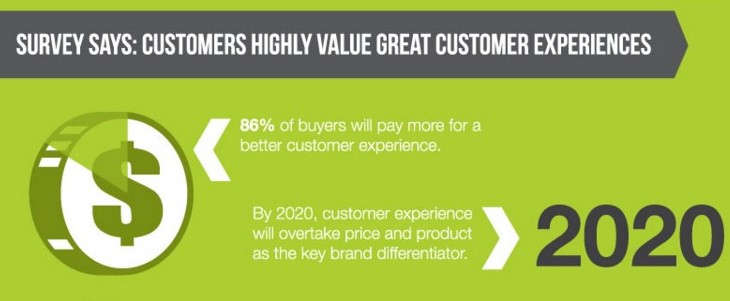How the restaurant chain bucked the trend and increased conversion rate by 35%
Many casual dining restaurant chains have been struggling for the past couple of years.
For instance, Ruby Tuesday saw a drop of 8.2% in revenue and closed 109 restaurants hich hile Applebee’s same-restaurant sales are down by 5.2%. (source)
TGI Friday’s, however, bucked the trend and experienced a 35% increase in conversion rate.
Their secret weapon?
Omnichannel personalization technologies that allow them to create a seamless online and offline experience and interact with customers through various touch points.
By delivering the most relevant and timely content and offers based on a customer’s preferences, habits, and past purchases, TGI Friday’s has increased conversion, ROI, average order value, and customer lifetime value.
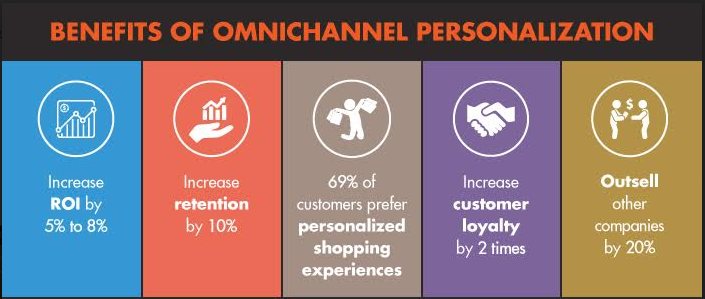
Key takeaways from TGI Friday’s personalization strategy
The challenge for many restaurants when entering the digital realm is bridging the online experience with in-store interactions.
Here’s how TGI Friday’s leverage omnichannel personalization for their marketing:
1. Master Guest Profile (MGP)
TGI Fridays’ integrates all of its owned customer data as well as online digital experience tracking metrics into one centralized platform to create an MGP, which is updated in real-time to reflect the latest customer interactions.
Your MGP should incorporate data such as social media activities, location information, customer preferences, and order history to inform how you can deliver content and offers that will add value and increase sales.
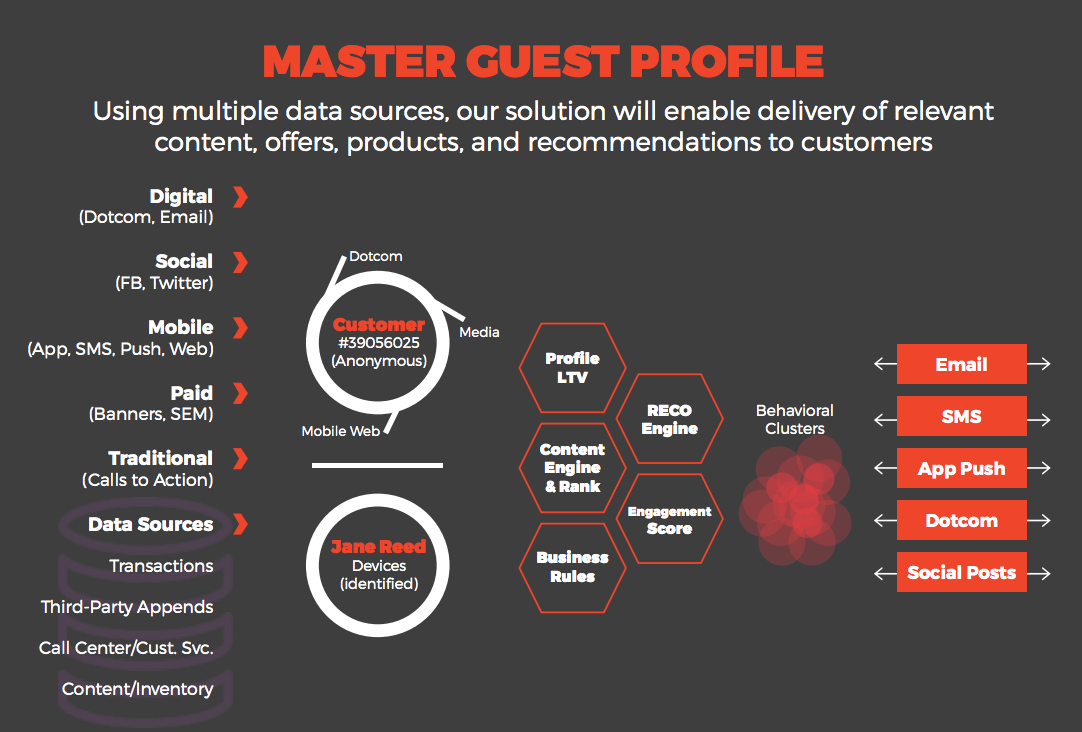
2. Personalized interactions on social media
TGI Friday’s uses a chatbot technology to deliver one-on-one interactions with guests on Twitter, helping them find nearby restaurants, place takeout orders, and more.
Social media platforms are launching more features that allow brands to personalize customer experiences. Besides providing customer service, you can also leverage customer data to deliver personalized offers in the right place at the right time.
3. Special offers via mobile apps
Through their app, TGI Friday’s uses push notification to send reminders based on customers’ past purchasing behaviors. The app also makes it easy for customers to re-order their favorite dishes from a list of past purchases.
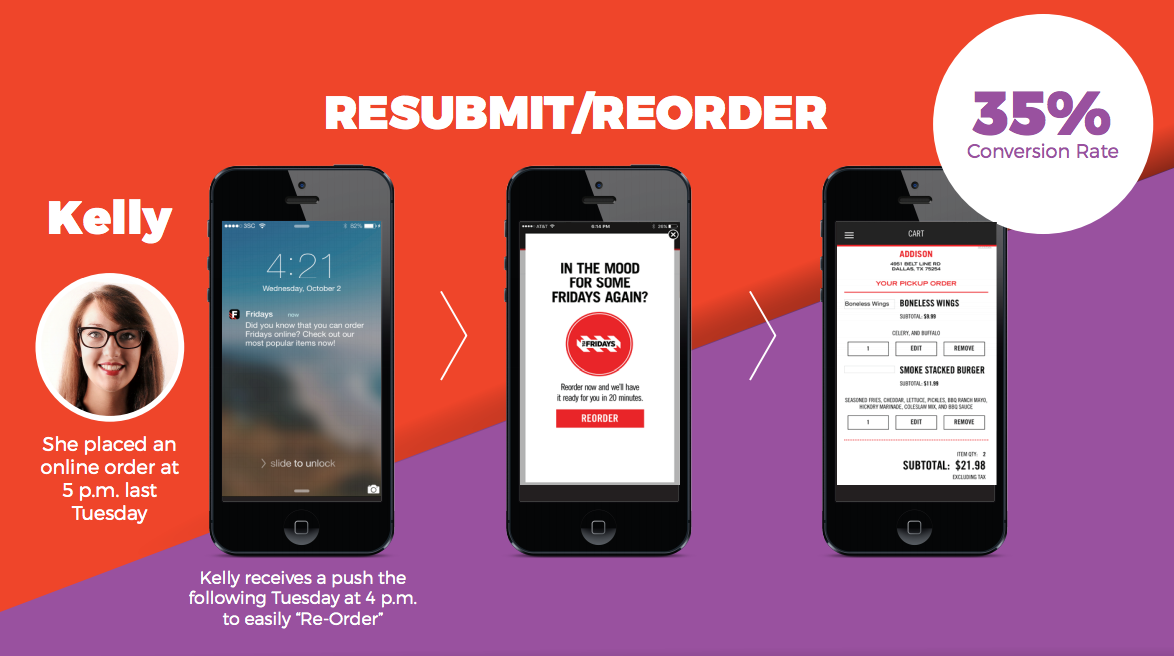
4. Automated email personalization
TGI Friday’s uses email to stay in touch with customers and deliver personalized offers to encourage them to order online or visit the restaurants.
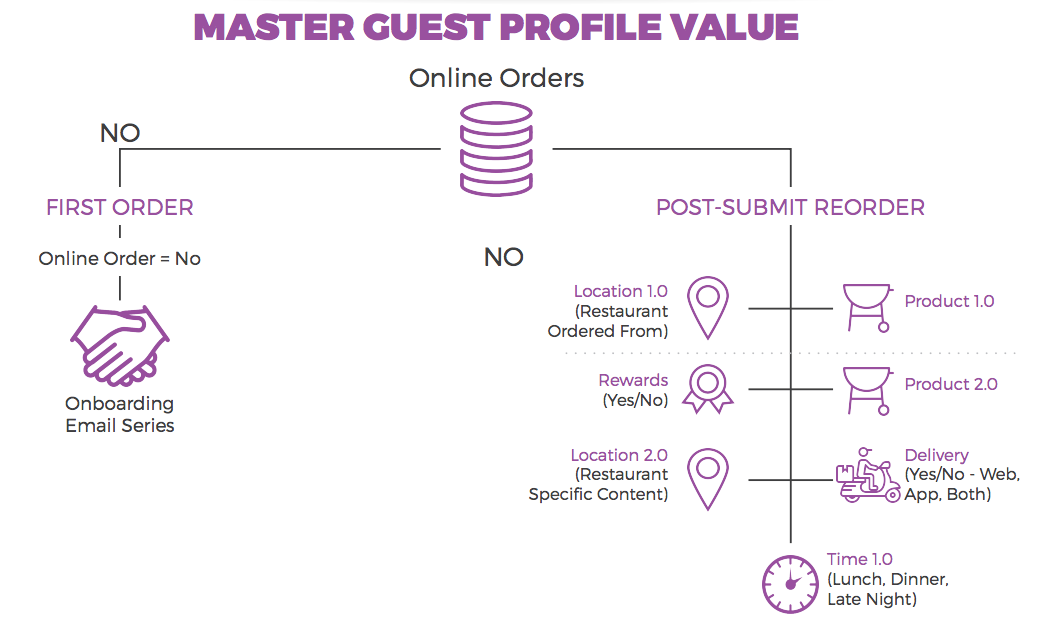
Here are some ideas for using email marketing in your restaurant business by leveraging customer data:
- Offer personalized discounts based on order history.
- Send birthday and anniversary emails.
- Update customers on loyalty rewards.
- Reach out to guests who haven’t visited for a while.
- Offer priority reservation for the busiest holidays.
5. Push notifications to encourage first-time orders
Offering a mobile app is a great way to market your restaurant business. However, having downloaded the app doesn’t imply that a user would convert into a customer.
TGI Friday’s sends out a push notification with a discount code to entice these users to place their first orders. This personalization strategy has helped the restaurant chain 3.8x the conversion rate.
Omnichannel personalization is the new frontier in Restaurant Marketing
New technologies are now making it much easier to collect and analyze a large amount of consumer data to inform your marketing strategies.
By using a robust centralized platform to manage your customer data, you can deliver highly personalized messaging and offers to build relationships with your customers and increase sales.


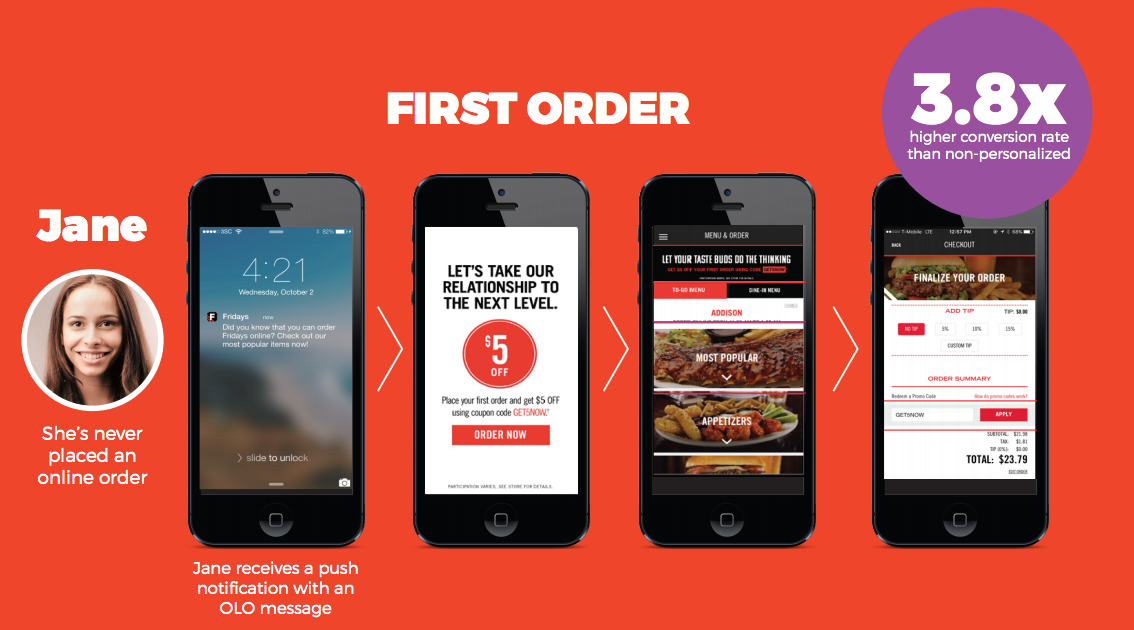




![Big Brands Get Personal With Customer Data [Case Study]](https://nectarom.com/wp-content/uploads/2017/09/DeathtoStock_Wired6-300x200.jpg)




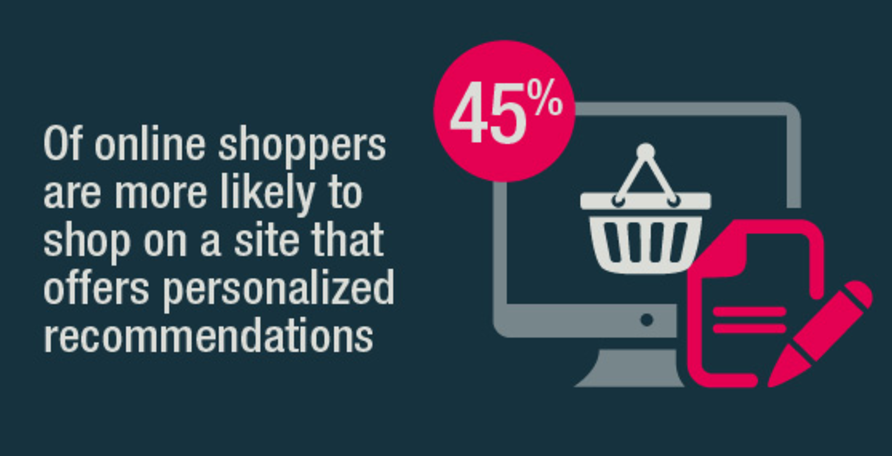




 Image source
Image source Image source
Image source



